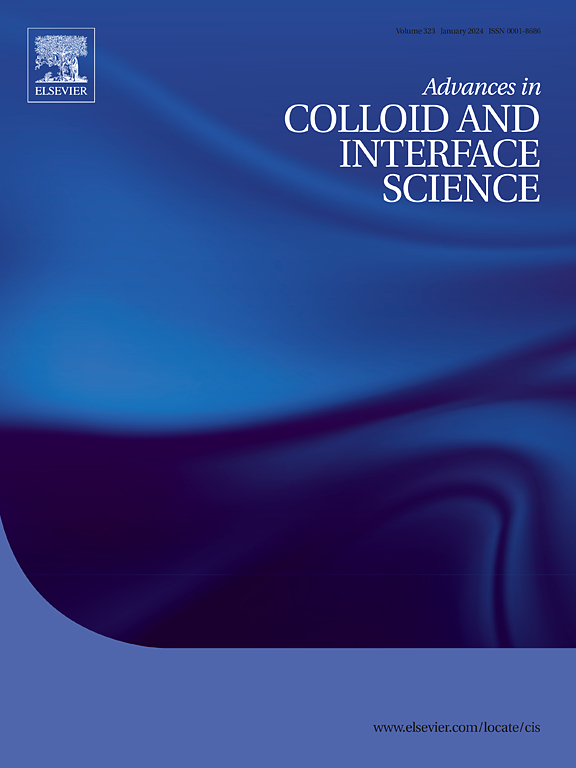Graphene-based nanomaterials applications for agricultural and food sector
IF 15.9
1区 化学
Q1 CHEMISTRY, PHYSICAL
引用次数: 0
Abstract
In the past decade, graphene-based nanomaterials (GBNs) have been considerably investigated in agriculture due to their exceptionally enriched physicochemical properties. Productivity in the agricultural sector relies significantly on agrochemicals. However, conventional systems suffer from a lack of application efficiency, resulting in environmental pollution and associated problems. Due to high surface area, easy functionalization, high chemical stability, biocompatibility, and ability to adhere to biological structures, GBNs become a promising candidate for agro-delivery carriers. A comprehensive review on developments of GBNs for pesticide delivery, nutrient delivery, food packaging and preservation, and their impacts on plant growth and development are missing in the literature. To address this, here we presented a detailed review on the material design, agrochemicals loading, release or diffusion kinetics, in-vivo applications, and effects of GBNs on plants. The GBNs found to improve the efficacy of existing agrochemicals and food preservatives, aiming to decrease the overall burden of these substances. The incorporation of GBNs in biocompatible and biodegradable polymers is reported to improve their oxygen barrier and mechanical properties for food packaging applications, targeting to reduce the use of petroleum-derived polymers based current food packaging materials, which leads to serious environmental impacts. In the context of plant nanobionics, GBNs has been found to boost the plant growth at low concentrations. Here, recommendations for future research have been deliberated, drawing reference from the relevant area to gain a deeper understanding of the underlying science, and to develop better delivery and packaging applications approaches. Additionally, discussions on recommendations regarding the safe concentration of GBNs for plant nanobionics are presented to facilitate their secure and effective utilization.

石墨烯基纳米材料在农业和食品领域的应用。
在过去的十年中,石墨烯基纳米材料(GBNs)由于其异常丰富的物理化学性质在农业中得到了大量的研究。农业部门的生产力在很大程度上依赖于农用化学品。然而,传统的系统存在着应用效率低、环境污染等问题。由于比表面积大、易于功能化、化学稳定性好、生物相容性好、与生物结构的粘附能力强等优点,gbn成为农业运输载体的重要候选材料。文献中缺乏对gbn在农药输送、营养输送、食品包装和保存方面的发展及其对植物生长发育的影响的全面综述。为了解决这一问题,我们在此详细介绍了GBNs的材料设计,农药装载,释放或扩散动力学,体内应用以及对植物的影响。发现gbn可以提高现有农用化学品和食品防腐剂的功效,旨在减少这些物质的总体负担。据报道,在生物相容性和可生物降解聚合物中掺入gbn可以改善食品包装应用中的氧气屏障和机械性能,旨在减少当前基于石油衍生聚合物的食品包装材料的使用,这些材料会导致严重的环境影响。在植物纳米仿生学的背景下,已经发现gbn在低浓度下促进植物生长。在这里,对未来的研究提出了建议,从相关领域借鉴,以获得对基础科学的更深层次的理解,并开发更好的交付和包装应用方法。此外,还讨论了植物纳米仿生学中gbn的安全浓度建议,以促进其安全有效的利用。
本文章由计算机程序翻译,如有差异,请以英文原文为准。
求助全文
约1分钟内获得全文
求助全文
来源期刊
CiteScore
28.50
自引率
2.60%
发文量
175
审稿时长
31 days
期刊介绍:
"Advances in Colloid and Interface Science" is an international journal that focuses on experimental and theoretical developments in interfacial and colloidal phenomena. The journal covers a wide range of disciplines including biology, chemistry, physics, and technology.
The journal accepts review articles on any topic within the scope of colloid and interface science. These articles should provide an in-depth analysis of the subject matter, offering a critical review of the current state of the field. The author's informed opinion on the topic should also be included. The manuscript should compare and contrast ideas found in the reviewed literature and address the limitations of these ideas.
Typically, the articles published in this journal are written by recognized experts in the field.

 求助内容:
求助内容: 应助结果提醒方式:
应助结果提醒方式:


